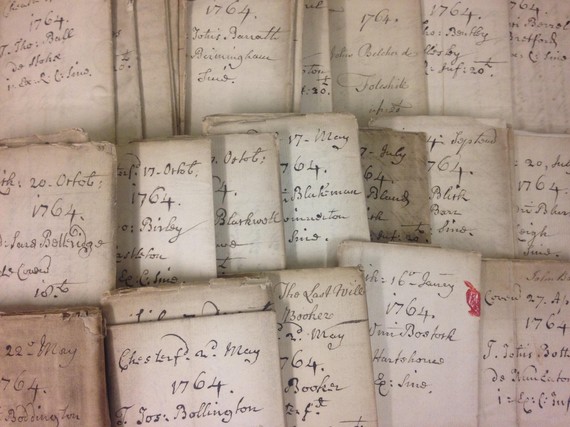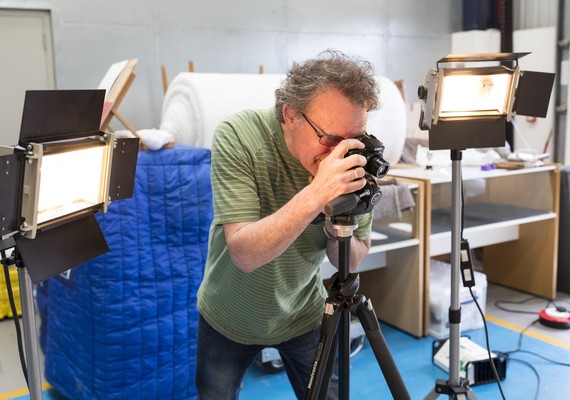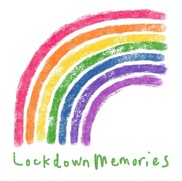
The Archive and Heritage Service started work on the new development phase for the Staffordshire History Centre project in January. The project paused initially when the Service was suspended during lockdown. The team soon adapted the planned work to the new digital and working from home environment. The key areas of work are:
- New audience research to analyse current membership and users of the service
- Consultation with new and potential users of the service
- Review and further consultation with schools to support the learning programme
- Cataloguing and preservation work on the William Salt Library collection in preparation for relocation.
The Audience Agency were appointed to complete the audience research and consultation with new and potential users of the service. They have done this by analysing information about users registered to use Staffordshire Record Office and William Salt Library. They have also looked at existing use of the service website and social media. This has helped confirm who currently uses the service, their age range, areas they travel from, and types of user.
In June an online survey was launched to gather responses about the current and potential use of the service. It asked for views on the service websites, visiting the Record Office, William Salt Library and touring exhibitions. The survey also asked if respondents were interested in taking part in a focus group. Over 440 people responded to the survey and two online focus groups have been delivered selecting current users and non-users of the service. The research report has just been shared with the team and is helping them to refine the activities for the History Centre and also gain feedback on proposals for the new build elements and exhibition space. Further work is planned to develop a marketing strategy which will raise awareness of the History Centre including the activities which will be delivered.
A consultant was also appointed to review previous learning work that was developed. A teacher survey was delivered receiving a good number of responses. Due to the closure of schools pilot activities were created to be delivered online. The team are awaiting the final report to enable them to refine this area of the project.
Cataloguing work had started at the William Salt Library with preservation work delivered by a small group of keen volunteers. This paused during lockdown although the cataloguing has resumed now that the staff are able to work onsite again. Sadly it will not be possible to bring the volunteers back into the building but we are looking at seconding a member of staff to take on this work instead.
With the delays the submission date for round two is planned for winter/spring 2021. Updates on the project can be found on the service website
‘Self portrait’, John Prescott Knight, about 1845 (G95.030.0001)
John Prescott Knight
Senior Museum Officer, Chris Copp, takes a look at John Prescott Knight (1803-1881) in the second of our series on Staffordshire artists featured in the County Museum Service’s art collection. John Prescott Knight was one of the few Stafford-born artists who could boast a national reputation.
John Prescott Knight was born into an acting family in Stafford in 1803; his father Edward Knight was an actor employed by the Stafford Company at the time. He inherited some of his father’s love of the theatre and performed on stage as a young man. He was said to have a fine singing voice. Like his father, he was a short man and was described as ‘very energetic’.
John began his working life as a junior clerk in the office of a West India merchant in London. When his employer went bankrupt Knight turned to art. His father paid to place him for six months with Henry Sass to improve his drawing and for a further 6 months with George Clint to work on his colouring skills. In 1823 he became a student of the Royal Academy and his artistic career was underway. His wife, Clarissa Isabella, was also a painter and exhibited paintings of domestic subjects in the 1830s.
He became a highly successful portrait painter and his sitters included the Duke of Wellington, Rowland Hill, who introduced the Penny Post, and the architect Charles Barrie. His large 1842 painting, ‘The Heroes of Waterloo’ proved to be highly popular. He also painted genre scenes, such as ‘Smugglers Alarmed’ also in the County Museum collection. He was Professor of Painting at the Royal Academy from 1839 to 1860, and Secretary to the Academy between 1848 and 1873.
Knight died in London in March 1881 after a long illness. Although little known today, many of his works can be found in the collections of the National Portrait Gallery, the Royal Academy and Tate Britain. We are fortunate to have nine oil paintings and an engraving in our collections.
‘Clarissa Isabella Knight’, John Prescott Knight, about 1843 (G97.009.0001)
 Howard Dixon Digitisation & Reprographics Officer
As you are probably aware from the staff that have already featured in the newsletters a huge range of skills and experience can be found across the Archives and Heritage team. In this edition we meet Howard Dixon who as in his role as Digitisation and Reprographics Officer, divides his time between working with the Museum collections and those at the Record Office and William Salt Library.
What does your role involve?
My work is divided between the museum, Record Office and William Salt Library. The digitisation aspect of my work takes place with the Museum Team; scanning photographs, slides and photographing collection objects for Past Track and Calm, our collections database. I process orders for images and prints that come through Past Track and reply to Past Track enquiries and feedback. I also help with touring exhibitions and assist the museum staff with work in the collections stores.
The reprographics side of my role at Record Office is primarily with customer orders which involves photographing documents, maps etc from the archive collections. I add images of documents and photographs to Past Track and Calm CMS from the archive collections and assist with exhibitions at the Record Office.
When did you start working with the Archives and Heritage Service?
I have been with the service since March 2002.
What made you choose this career?
I was made redundant from JCB in 1998 and then went to work for an engineering company in Stoke on Trent. At that point I really fancied a change from engineering! I was very much looking for a change in my job career. I noticed the job as digitisation technician on the first Past Track project and applied for the job. I went for the interview at the museum offices at Shugborough. I was very impressed by the friendly staff and beautiful location of the museum - I am very glad that I was offered the position.
What is your favourite object or document or photograph from the collection?
The Carriage and Art collections are probably my favourite things from the museum collections. From the Record Office collections my favourite items are probably the Indenture documents, some are very elaborately written and decorated.
What is your most memorable moment about working for the Service?
Living at one of the gatehouse lodges on the Shugborough Estate for seven years. Shugborough was where the county museum and offices were situated before the National Trust took over the estate in 2016.
Away from work, do you have a hidden talent or special skill?
I like growing veg on my allotment. I also have picked up my guitar again and enjoy having a strum now and then.

Lockdown Memories is a project working to create a lasting record of the Covid-19 pandemic and lockdown measures and how it has affected the lives of Staffordshire people. Everyone has been affected by the pandemic. You might have spent lockdown working for the NHS or as a key worker, or socially isolating in your own home, or may even have suffered through illness. Whatever your experience we would like to hear your story.
We would like to collect as many reminiscences as possible - these will help us to document Staffordshire’s response to the Covid-19 pandemic in 2020, and may be used for an exhibition, publication, or website.
Please complete our short questionnaire by following the link. Please take care to complete the section giving permission for us to make use of any stories you submit.
Also, if you have any objects, photographs, drawings, paintings or documents relating to your lockdown experiences that you would like to lend or donate to the Archive Service or the County Museum’s collections, please let us know. This might be protective clothing or leaflets, things linked to VE Day or the Black Lives Matter events, or anything else which you associate with your lockdown memories. Find our contact details here.
|
Our aim is to keep you updated with the latest developments and events. If you do not wish to receive this newsletter please use the 'unsubscribe' button at the bottom of this page.
|